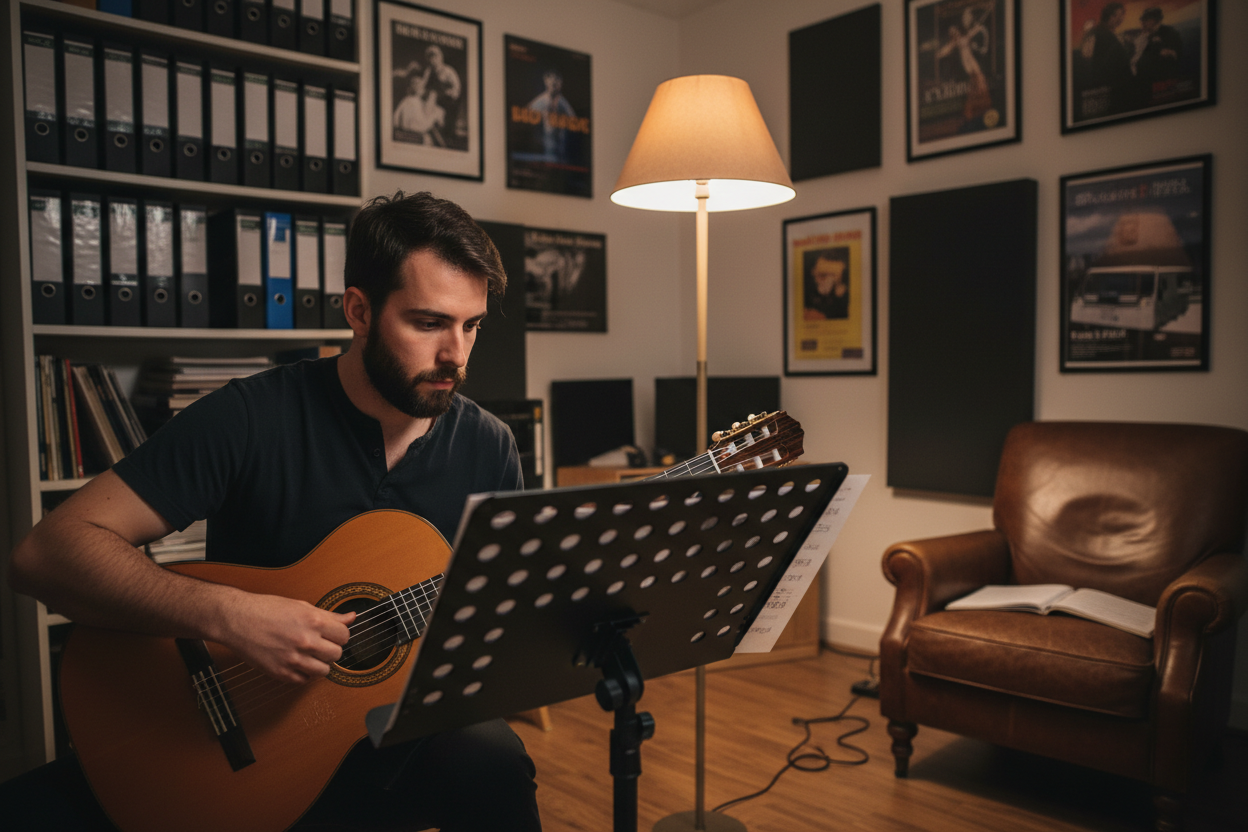In our previous guitar lesson article, we delved into the major scale, the foundation for Western music. With that knowledge in hand, it's time to explore the harmony that arises from it. Chord families are groups of chords that work together harmoniously within a given key, providing guitarists with a roadmap for creating beautiful progressions. In this article, we'll help you understand chord families and how to use them to elevate your playing.
What are Chord Families?
A chord family is a group of chords derived from a specific major scale, with each chord built on a different degree of the scale. These chords share common notes and harmonize well together, forming the backbone of countless songs and progressions. Chord families are particularly important for guitarists because they provide a systematic way to approach composing, improvising, and understanding music theory.
Chord Construction and Roman Numerals
To understand chord families, we must first grasp how chords are constructed. Chords are built by stacking thirds, which are intervals spanning three letter names, on top of each other. Within a major scale, each degree can be assigned a Roman numeral, with uppercase numerals representing major chords and lowercase numerals denoting minor chords. The seventh degree is typically diminished and is designated by a lowercase numeral with a small circle (°) beside it.
For example, the C major scale (C, D, E, F, G, A, B) has the following chord family:
I - C major (C, E, G)
ii - D minor (D, F, A)
iii - E minor (E, G, B)
IV - F major (F, A, C)
V - G major (G, B, D)
vi - A minor (A, C, E)
vii° - B diminished (B, D, F)
The three primary chords in any major key are the I, IV, and V chords, known as the tonic, subdominant, and dominant, respectively.
Applying Chord Families to the Guitar
Now that you understand the basics of chord families, it's time to apply this knowledge to the guitar. Start by practicing the chords within a given key, such as C major, using open chords or barre chords. Once you're comfortable with the chords, experiment with different progressions, focusing on the I, IV, and V chords, and then incorporating the ii, iii, and vi chords for more variety.
The Circle of Fifths


The Circle of Fifths is a valuable tool for understanding chord families and relationships between keys. It visually represents the twelve major keys and their relative minor keys, arranged in a circle according to the interval of a perfect fifth. Moving clockwise around the circle adds a sharp, while moving counterclockwise removes a sharp or adds a flat. The Circle of Fifths can help you quickly identify the chords within a key and transpose progressions to different keys.
Chord Families in Minor Keys
While we've focused on major keys, chord families also apply to minor keys. The relative minor of a major key shares the same key signature and can be found by starting from the sixth degree (vi) of the major scale. The chords in a minor key follow a different pattern of major, minor, and diminished chords:
i - minor
ii° - diminished
III - major
iv - minor
v - minor
VI - major
VII - major
Conclusion
Mastering chord families is essential for guitarists seeking to deepen their understanding of music theory and unlock a wealth of harmonic possibilities. Familiarizing yourself with chords within a key and practicing various progressions will improve your composition, improvisation, and ability to analyze music.
By investing time in studying chord families, you'll gain confidence and versatility in your playing, allowing you to tackle diverse musical styles and genres. In conclusion, understanding and applying chord families is a fundamental aspect of music that will elevate your musicianship and open new creative pathways.




